Goldbug Software
vCard Editor for Mac
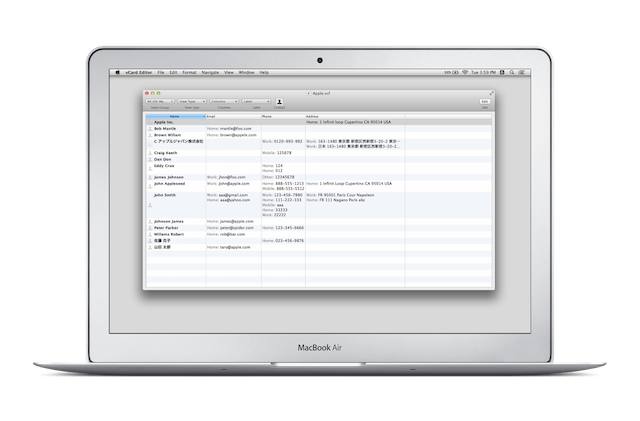
Check out vCard Editor2
vCard Editor uses AddressBook Framework in macOS to decode/encode vCard.
Apple introduced Contacts Framework at macOS 10.11 to replace AddressBook Framework, and recomended to switch it to the new one.
This is the reason why vCard Editor2 is designed as the new version of vCard Editor. And other new functions in the lates macOS is used to do it too.
Further more, vCard Editor is buit by Xcode 13.4 on macOS 12.7.4 in order to work in macOS 10.9 and later. The deployment target of Xcode 13.4 is macOS 10.9 - 12.3. So please note that it may cause any unexpected issues when you use vCard Editor in macOS 12.3 and later.
Please consider to switch vCard Editor to the new one.
There is a buntton to download the trial version of vCard Editor2 in the page.
How to use vCard Editor
Security and Privacy
When you launch vCard Editor at first time, you will see an alert for enabling for vCard Editor to access your contacts. Please click OK. Although vCard Editor doens't access your contacts but the AddressBook Framework which is used by vCard Editor to decode/encode vCard requires the permission.
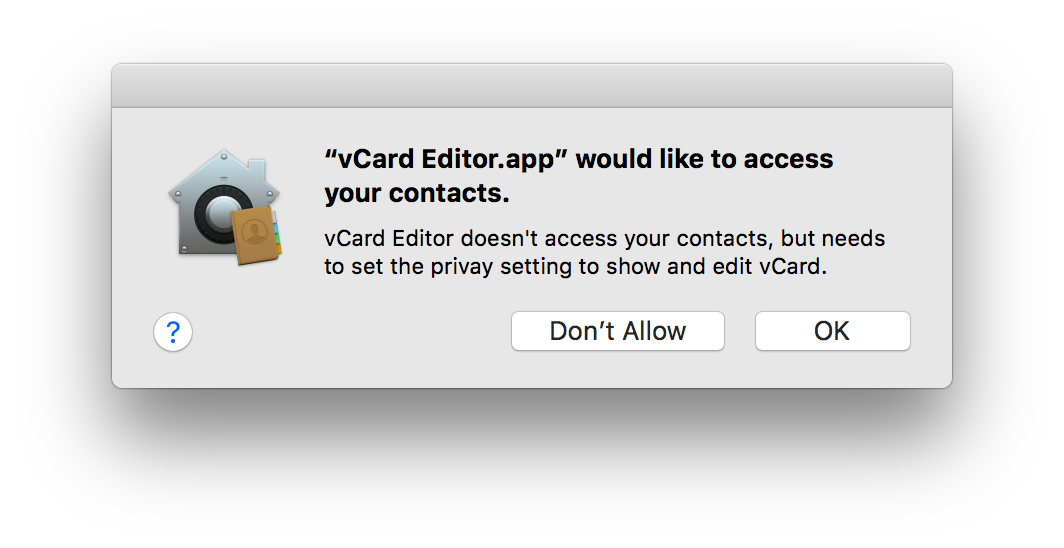
The other way is allowing vCard Editor to access your contacts in the System Preferences.
Open the System Preferences. There is a privacy pane in the "Security & Privacy" preferences. Then select the checkbox for vCard Editor in the pane.
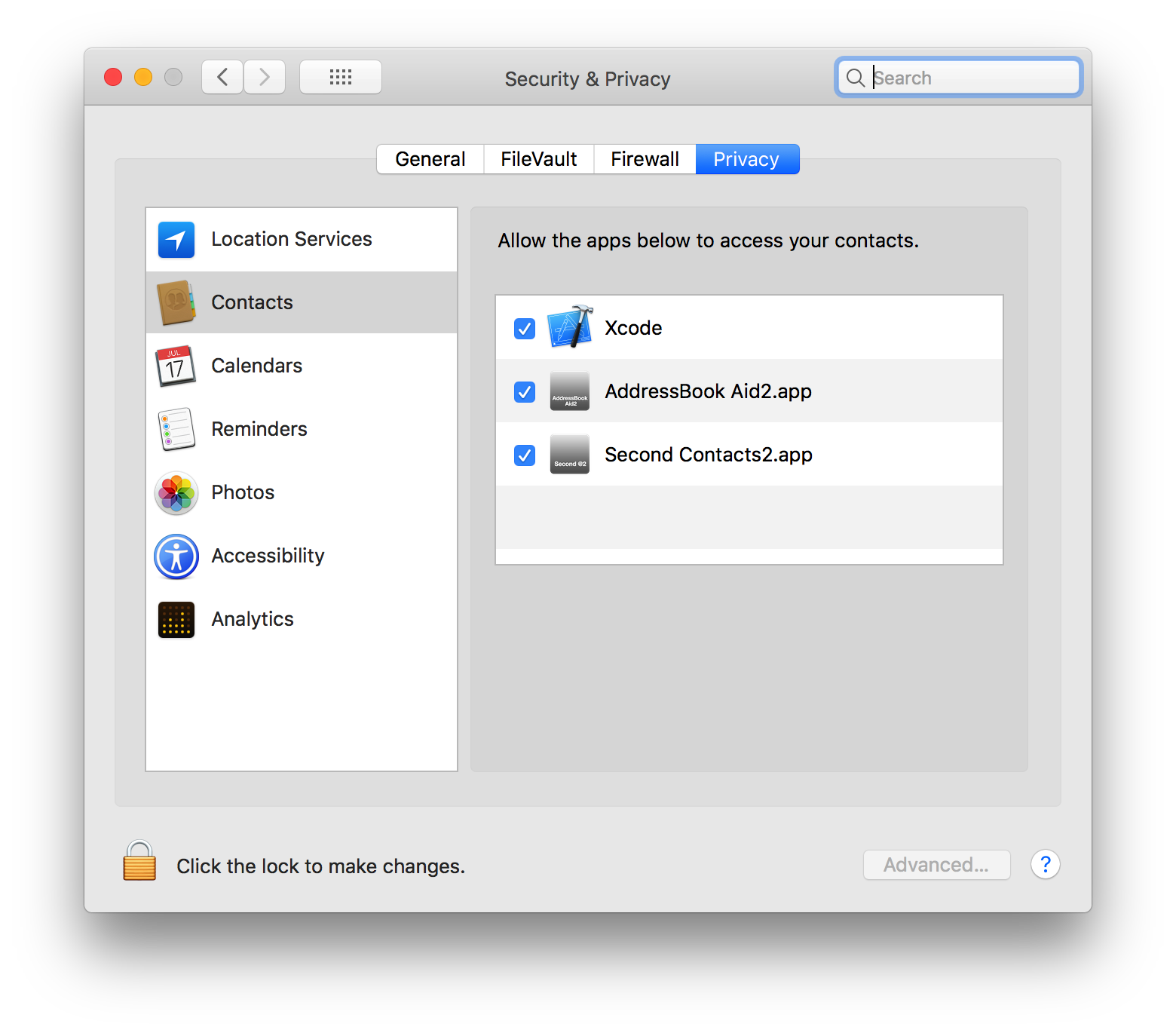
Editing Tips
There are two types of data in the vCard file. One is just string such as company, and the other is labeled value. The labeled value consists of label and string and you can have multiple label and sting pairs.
And if the data is the labeled value, you can add multiple values as the data like the picture below. So the panel is used to add/delete the labeled value.
In case of the address and instant message, those string consists of sub strings such as ZIP, State, Street, and so on.
The string in the cell can be edit directory which doesn't have label, or consists of sub strings.
When you type a enter key, selection will move to the next row, and when when you type a tab key, selection will move the the next column.
If the next cell is empty or the cell is for labeld value, the edit panel will open.

Dobule-click with holding the command key on a cell which has a label, the edit panel will open.
The panel lists the labeld values, and show the buttons for adding/deleting the labeled value.
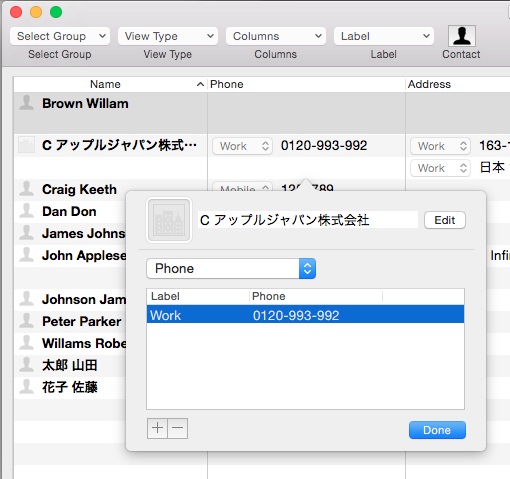

The other edit panel will open when you double-click the cell, if the cell is for address or instant message.
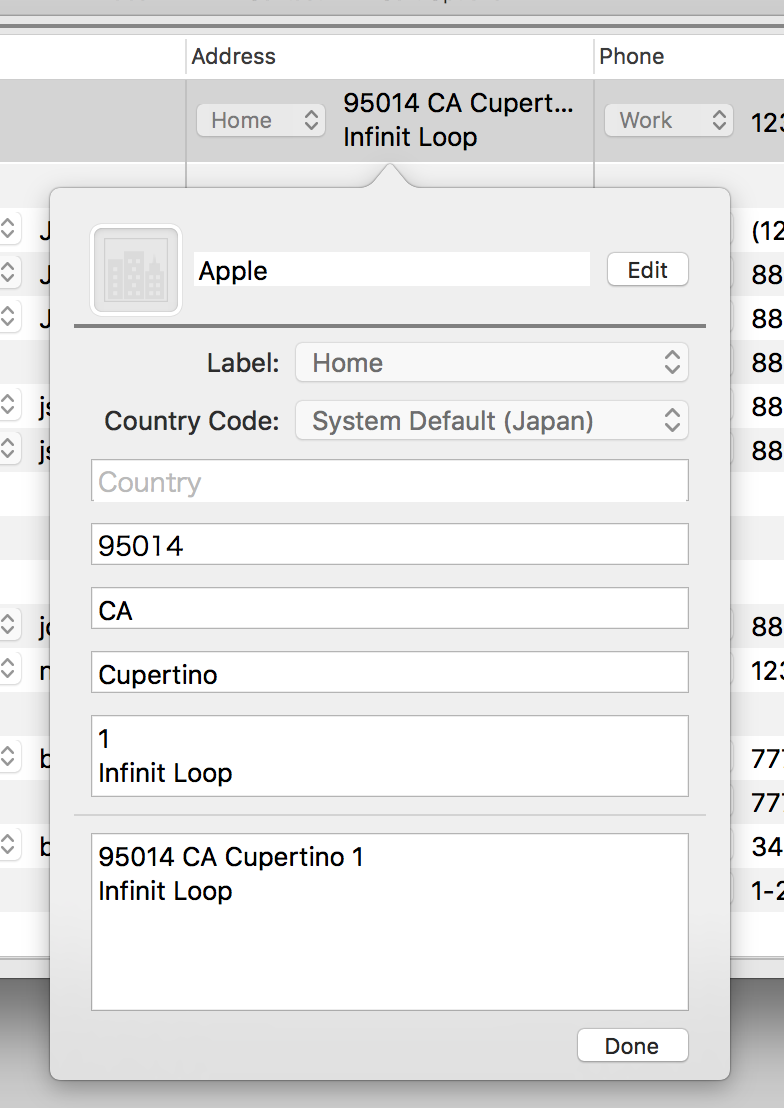
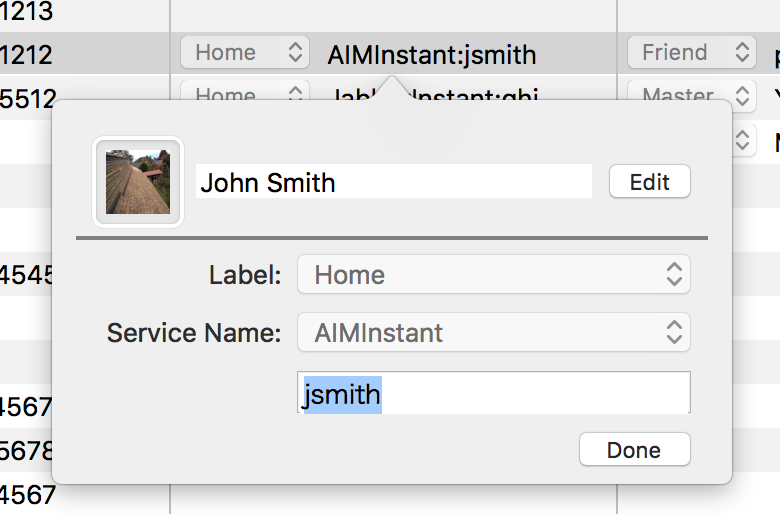
Country code in the address panel
When you double-click the address cell or with holding the command key, the following address panels are shown. The country code in the panel is used to change the format of the postal address. If it is empty, county code in the system default is used. Please note that the Country value is not related to the country code. You can set any string as the Country.


The country code is used to format a address.
When you select the country code in the column, the string at the top of the panel will be formatted as the code.
For example, when you select US at the column, the strings will order like "1 Infinite-loop Cupertine, CA 95014".
When you select JP, it will be "95014 CA Cupertinoe 1 Inifinite-loop".
Replacing item in the Address
Before the version 2.5.2, the postal address is used to find&replace the string. It means you can find "Cupertino, CA", but you can't replace the Cupertino in the string directly. Instead, the address list panel is shown when you click the Replace button.
From the version 2.5.2, you can replace the Cupertino with other string directly. The matching string is done in each item of the address. Howerver you can't find the "Cupertino, CA", because the string consists of the two items.
Setting the same label or value in the selected rows
The new feature is setting the same label or value in the seleced rows at once.
It works on the phone, email and note column and so on.
Please try to change a label in a column such as Phone with selecting multiple rows, an alert will be shown for making sure the operation.
When you click the OK button, all the labels of the Phone column you selected will be changed.

Adding/Deleting members in a group
You can add/delete members of a group in the Group view which is opened by the "Show Groups" menu in the Group Button.
To add members in a certain group, select contacts in the "All Contacts", then drag and drop them to the group.
To delete members in a certain group, select contacts in the group, then select the "Delete Contacts" menu in the contact button.
The contacts are deleted in the group but not deleted in the "All Contacts".

Editing contact image
You can set the image of contact in the contact info panel.
Show the contact info and "drag and drop" the image on to the contact image.
In order to delete the image, control-click on the image, then the context menu show the menu to delete the image.
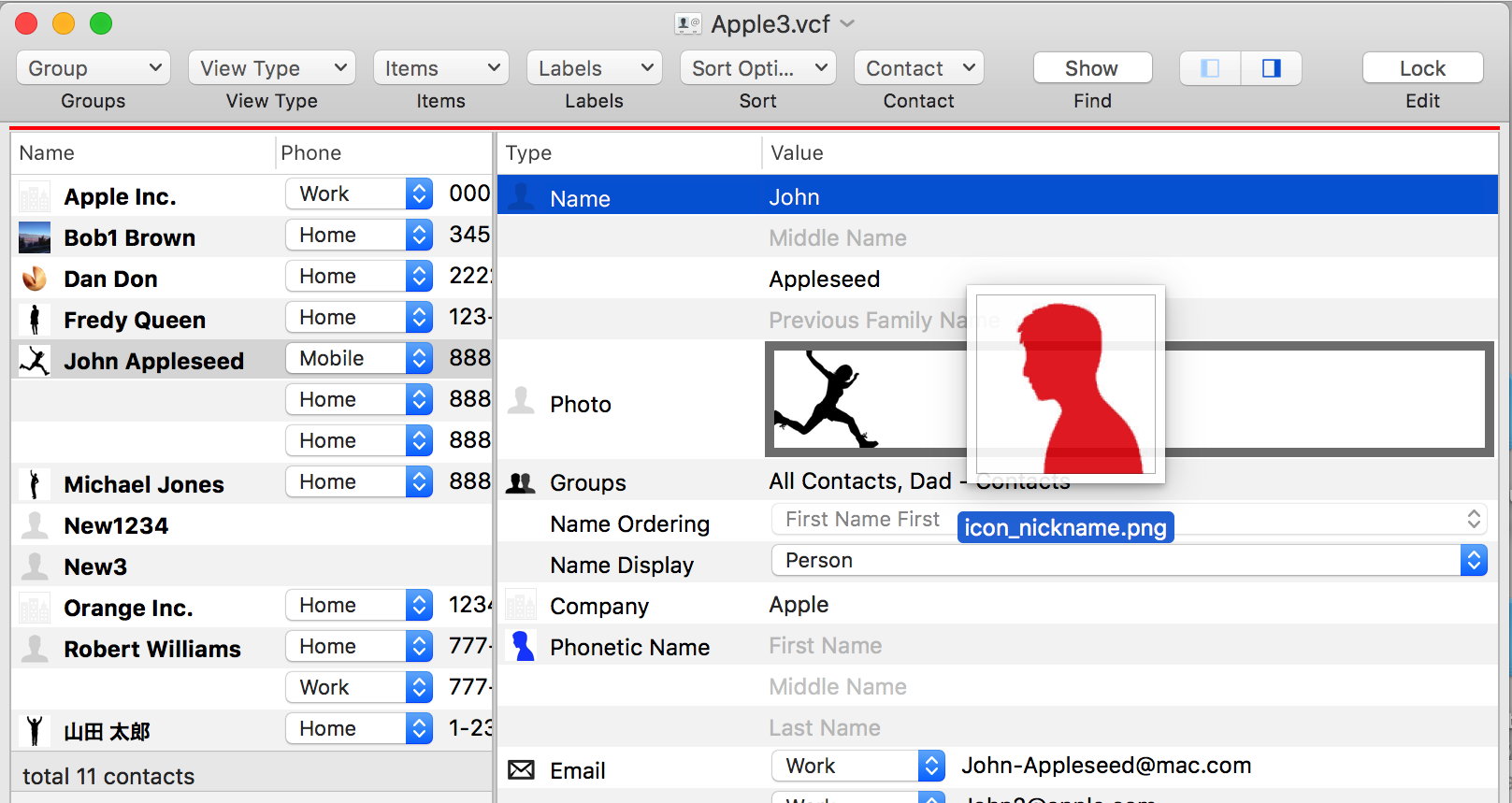
Reading CSV file
Reading CSV file, vCard Editor detects the data types by the first line of the CSV file.
The first line designate the items order and the type. Please check the sample file.
If vCard Ediotr fails to detect those, please modify the CSV file by referring the sample file.

Text Encoding
When you import the file, you may need to specify the text encoding. Please select an appropriate encoding in the open panel.
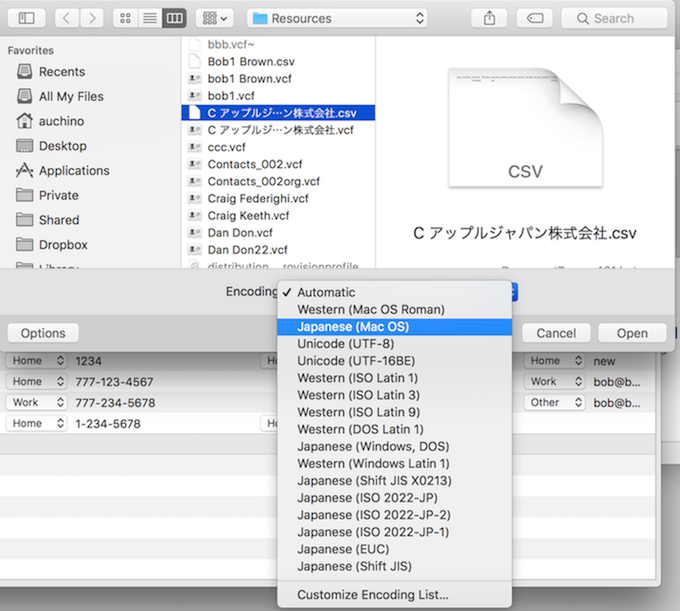
Exporting as CSV
The "Export as CSV" menu in the file menu is for exporting contacts as CSV.
The menu is enabled when more than one contact are selected in the windows.
And the exported file has a first line as explained above, and the text encoding will be UTF-8.

The CSV file has the first line which is mentioned above in order to designate the order of value. It means that not all the values in the contact are written in the file.